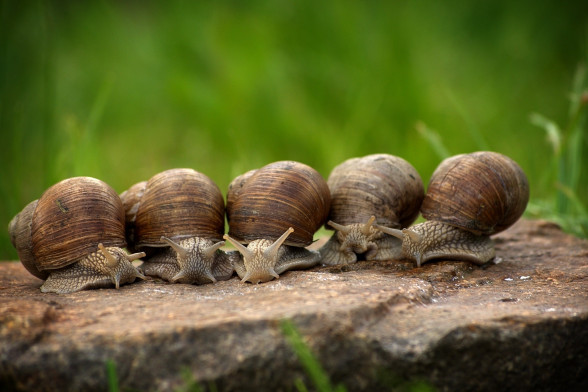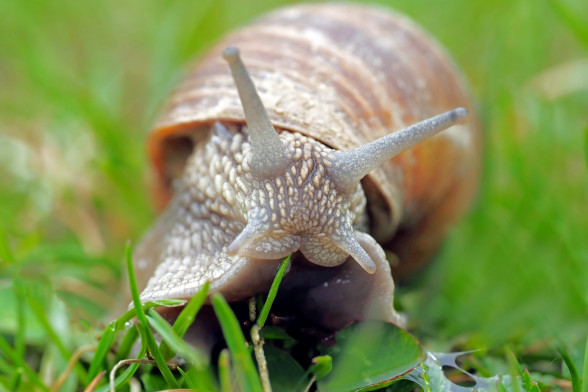
Roman snail (Burgundy snail)
Habitat
Moderately moist and moderately dry, moderately shady deciduous forests, more frequent near water reservoirs and in and around settlements. In Latvia, the Roman snail can be found in almost every old park, but it has also found suitable habitats in deciduous forests and river floodplains. In September, with the onset of cool nights and the first frosts, the snail seeks overwintering sites, openingburrows into the soil, and seals the shell with a calcareous epiphragm. In this way, they can withstand freezing and frost.
Diet
This herbivore maintains a diet that includes many fruits, vegetables, leaves, flowers, tree sap and other elements of plants.
Important and interesting facts
Snails were introduced into Latvia in the 15th and 16th centuries. At first, they were cultivated in monastery gardens, used as a medicinal remedy and as a food for Easter fasting, but then they gradually moved into the wild.
The thick shell protects the snails well against all natural enemies, but the lack of lime makes the shell thin, making it easier to chew, crush and root, as rats and mice, as well as birds, like to eat snails.
All snails have the shell twisted to the right. For every several thousand snails, you may find one with its shell twisted the other way. Snails are hermaphrodites, which means that each snail can play the role of both female and male, and each snail is capable of laying eggs.
Information sources: redzet.eu, latvijasdaba.lv, Wikipedia
Photos: redzet.eu, pixabay.com

